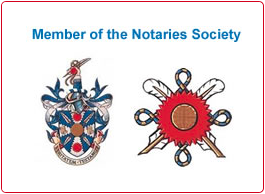How is Notarisation Done?
Posted on 25th August 2025The notarisation process involves multiple carefully orchestrated steps designed to ensure maximum document security and international acceptance. Understanding this process helps clients prepare effectively and appreciate the value of professional notary public services.
Initial consultation begins the process, where experienced notaries review documents, identify requirements, assess jurisdiction-specific needs, and explain applicable procedures. This prevents costly errors and ensures appropriate documentation from the outset.
Identity verification forms the foundation of notarisation. Notaries examine original passports, driving licenses, or other approved identification, sometimes utilizing electronic AML (Anti-Money Laundering) systems for enhanced verification. This process costs approximately £6 per search and provides additional security layers.
Document examination follows identity confirmation. Notaries review original documents for authenticity, completeness, and suitability for intended use. They identify any deficiencies, missing signatures, or formatting issues that could cause foreign rejection.
The notarisation ceremony involves formal procedures where clients sign documents in the notary’s presence, take required oaths or affirmations, and confirm their understanding of document contents. This ensures legal validity and prevents subsequent disputes.
Certificate attachment completes the notarisation. Notaries attach their official certificates, apply their personal seals, and sign with their qualified signatures. These certificates include specific language required for international recognition and include the notary’s registration details.
Record-keeping represents a crucial ongoing responsibility. UK notaries maintain detailed registers recording all notarisations, including client details, document types, dates, and certificate numbers. These records enable future verification and support ongoing authentication needs.
Post-notarisation services often include apostille application, consular legalisation, secure courier arrangements, and international delivery coordination. Professional notary firms provide comprehensive service packages addressing complete international documentation requirements.
Quality assurance throughout the process ensures documents meet destination country requirements while complying with UK regulatory standards. This dual focus prevents rejection while maintaining professional integrity and client protection.

{
"@context": "https://schema.org",
"@type": "Article",
"mainEntityOfPage": {
"@type": "WebPage",
"@id": "https://www.notarypublic.london/news/how-is-notarisation-done/"
},
"headline": "How is Notarisation Done?",
"image": "https://www.notarypublic.london/path/to/featured-image.jpg",
"datePublished": "2025-08-25",
"dateModified": "2025-08-25",
"author": {
"@type": "Person",
"name": "AJ Bennetts"
},
"publisher": {
"@type": "Organization",
"name": "Notary Public London",
"logo": {
"@type": "ImageObject",
"url": "https://www.notarypublic.london/path/to/logo.png"
}
},
"description": "The notarisation process involves identity verification, document examination, witnessing signatures, certificate attachment, record‑keeping, and post‑notarisation services ensuring documents are valid for international use.",
"articleSection": "Notarial Blog",
"keywords": "notarisation, notary public, international documents, apostille, identity verification, certificate",
"articleBody": "Initial consultation begins the process, where experienced notaries review documents, identify requirements, assess jurisdiction‑specific needs, and explain applicable procedures. Identity verification forms the foundation of notarisation. Notaries examine original passports, driving licenses, or other approved identification, sometimes utilizing electronic AML systems for enhanced verification. Document examination follows identity confirmation. Notaries review original documents for authenticity, completeness, and suitability for intended use. The notarisation ceremony involves formal procedures where clients sign documents in the notary’s presence, take required oaths or affirmations, and confirm their understanding of document contents. Certificate attachment completes the notarisation. Notaries attach their official certificates, apply their personal seals, and sign with their qualified signatures. These certificates include specific language required for international recognition and include the notary’s registration details. Record‑keeping represents a crucial ongoing responsibility. UK notaries maintain detailed registers recording all notarisations, including client details, document types, dates, and certificate numbers. Post‑notarisation services often include apostille application, consular legalisation, secure courier arrangements, and international delivery coordination. Quality assurance throughout the process ensures documents meet destination country requirements while complying with UK regulatory standards."
}
Posted in Notarial Blog







 Our Offices are located directly opposite the front of Charing Cross train station at:
Our Offices are located directly opposite the front of Charing Cross train station at:






